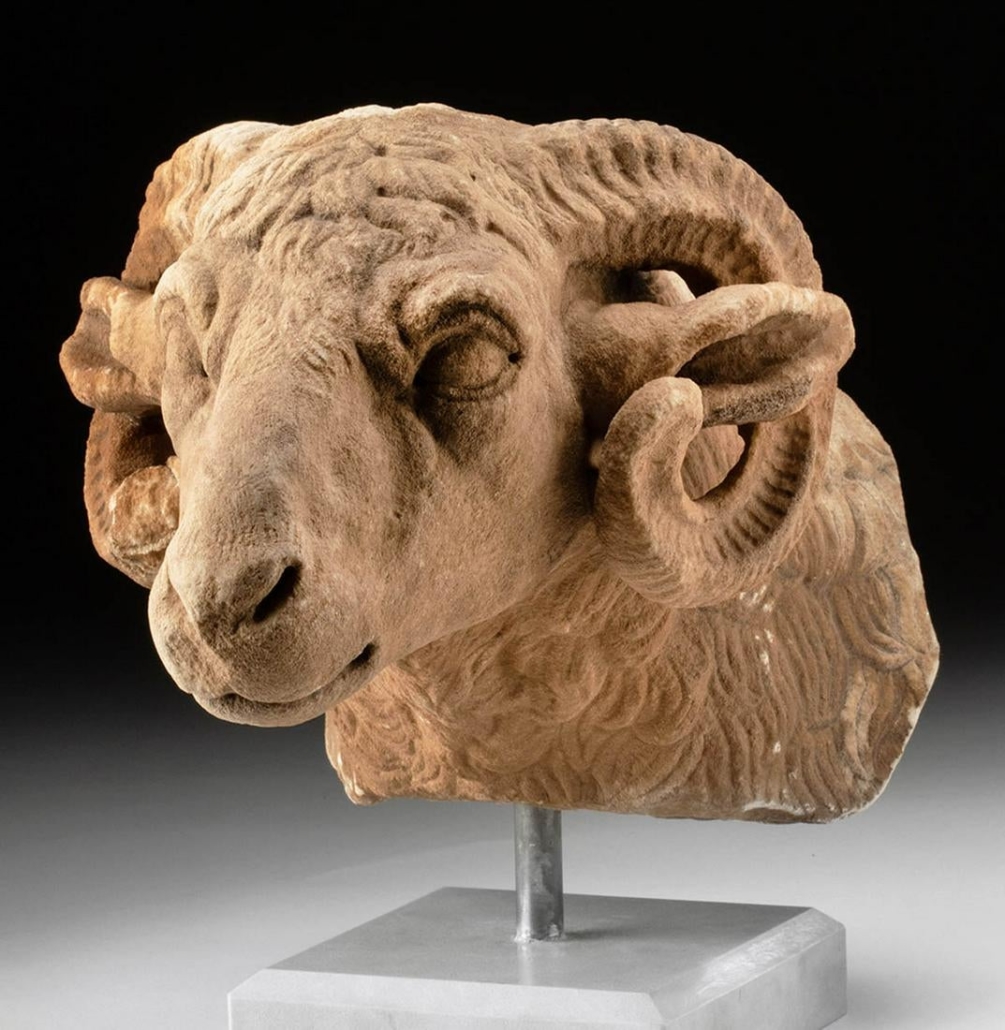
BOULDER, Colo. – Mystical Egyptian figures, breathtaking Persian jewelry, and art and relics representing centuries of influential civilizations formed the baseline for Artemis Gallery’s successful October 8 auction of fine antiquities, Asian and ethnographic art. The 353-lot offering of museum-quality items – many having distinguished provenance and a record of prior sale at important New York and London auctions of years past – exceeded pre-sale expectations to close just shy of the million-dollar mark.
Outstanding Roman Imperial carved marble sculpture of ram’s head claims top-lot honors at $136,950, more than four times the high estimate
The top lot of the sale was an extraordinary carved marble sculpture of ram’s head (shown at top of page) from the Roman Imperial Period, circa 1st century CE. Its incredibly lifelike features included a perfectly molded head, intense, heavily lidded eyes; a thick, wavy coat; and its crowning glory: a pair of grand, realistically ribbed and curled horns. The sculpture’s ownership history could be traced to 1906, when it was acquired in Greece. Against an estimate of $20,000-$30,000, the ram scaled upward to $136,950 – four times the high estimate and then some.
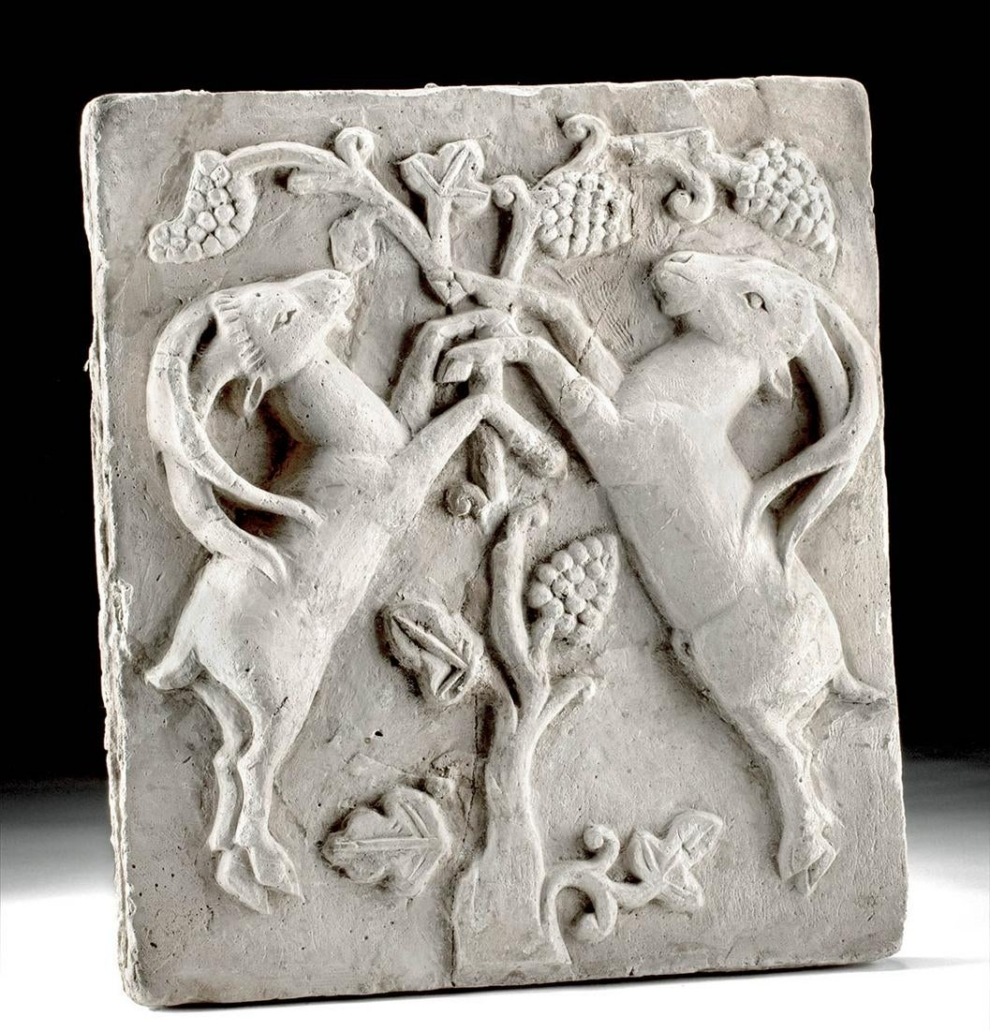
Animal figures, which have been a central theme in the art traditions of literally every major culture, made a strong showing on auction day. Following in the Roman ram’s footsteps was a stucco plaque with an expertly-modeled high-relief image of two beady-eyed ibexes leaping toward each other and nibbling on a grapevine. Identified as being of the Sasanian (Near East) culture, circa 6th century CE, the 18.25- by 14.25-inch plaque was described in the auction catalog as being similar to examples held in the Louvre and other venerable institutions. Its provenance included a 2007 auction at Sotheby’s New York. On October 8, it conveyed to its new owner for $31,125.
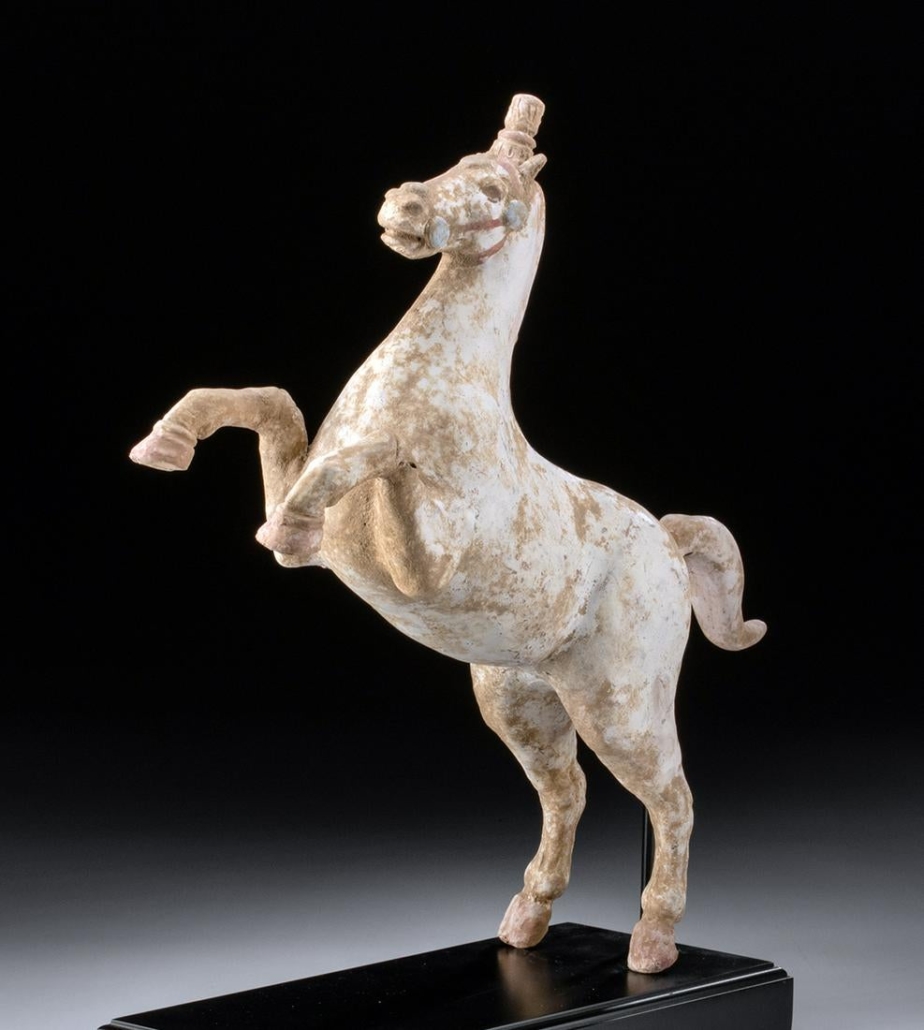
A third animal form that captured bidders’ attention is a circa 4th-3rd century BCE Canosan (Magna Graecia) polychrome terracotta sculpture of a rearing horse. A lively depiction standing 12.125 inches high (inclusive of stand), the equine’s body is painted white with traditional rosy pink secondary pigment, and its mane is secured in a pink topknot. The above-estimate selling price was $6,848.
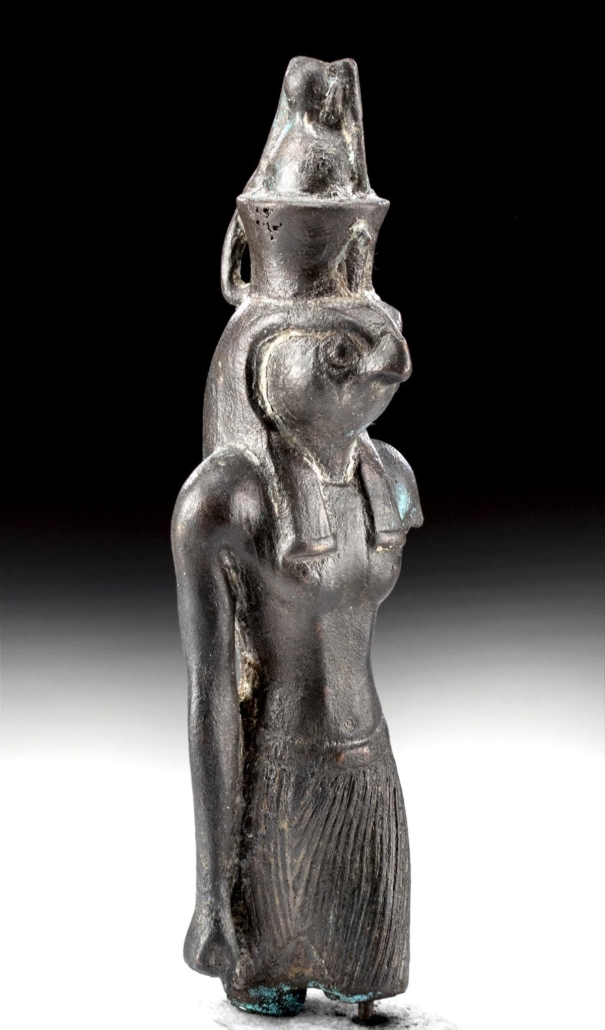
The endlessly fascinating mythology of Ancient Egypt came to life in a bronze statue of the falcon-headed god Horus. Created circa 1069-664 BCE (Third Intermediate Period, 21st to 25th Dynasty), the 8.75-inch-high figure is elaborately “dressed” to reflect Horus’ role of kinship, further reinforced by the presence of a small serpent called a “uraeus” – a symbol of supreme power – curled over the deity’s crown. Another version of this statue (without crown) can be found at the Yale University Art Gallery. The auction example sold within estimate for $8,715. A depiction of the infant Horus is seen in a beautiful cast-bronze sculpture of the goddess Isis-Hathor, who regally wears a horned crown with central sun disk and holds the divine baby in a maternal manner. Dating to circa 664-30 BCE, the 10.5-inch-high bronze is similar to one in The Metropolitan Museum of Art’s collection. It sold for $11,205.
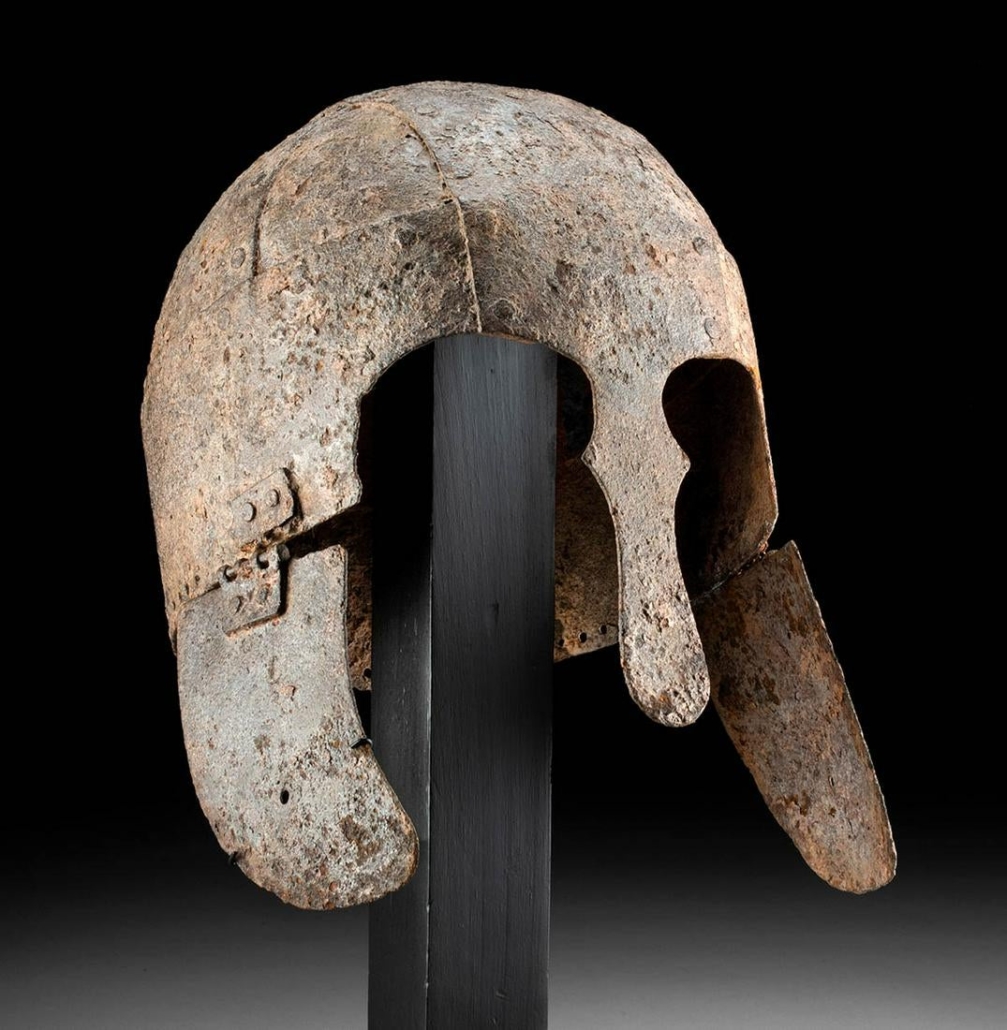
Warriors have always carried their status to battle with them, one way or another. But before medals, stars or styles of uniform became the symbols of military rank, swords and other implements of war served that purpose. Before the modern era, the inscriptions, standard of decoration and quality of metals used to forge weapons of war directly reflected the carrier’s rank or standing amongst his people. Evidence of this custom is especially obvious when examining the battle relics of Viking culture.
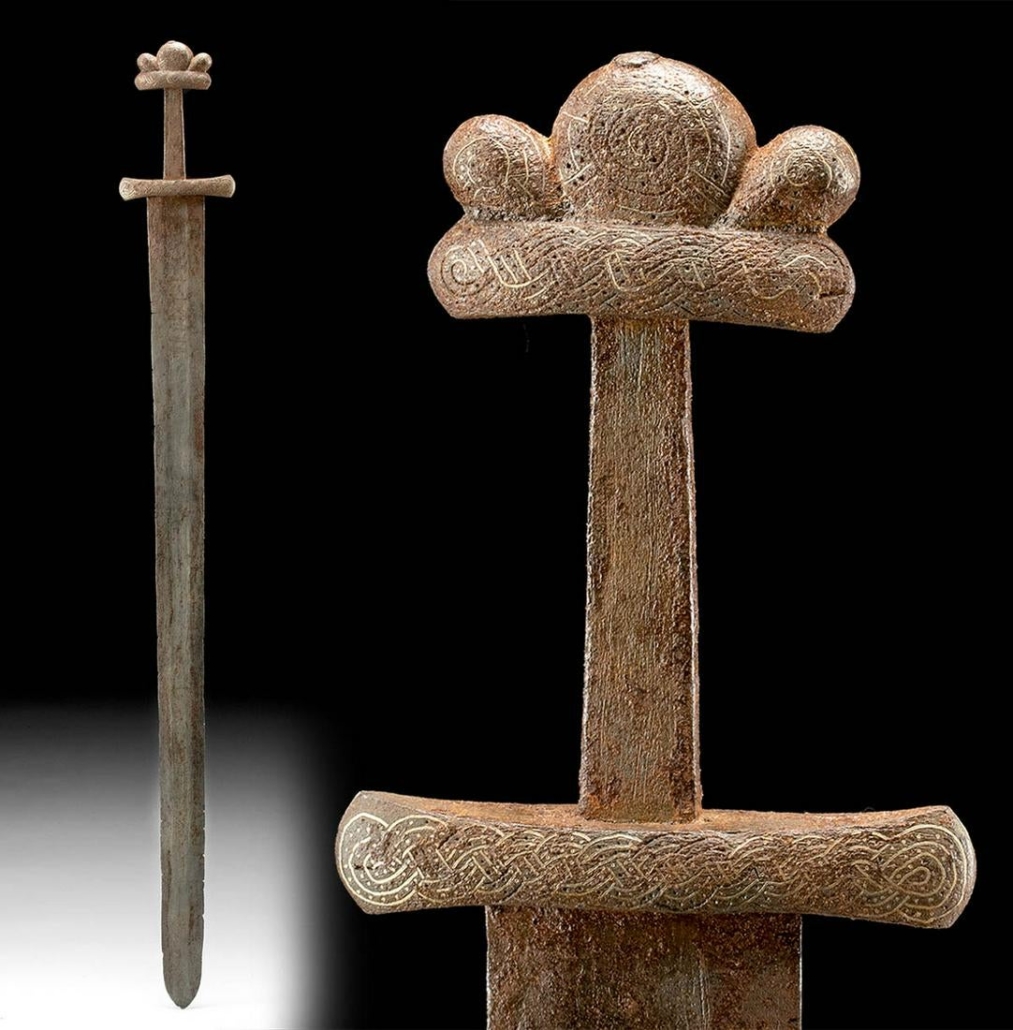
In their October 8 sale, Artemis Gallery offered a Type-S forged steel broad sword, circa 975-1050 CE (Late Viking Age), that exhibits all of the qualities of a weapon that would have been forged and engraved for an esteemed figure. The 37.3-inch-long weapon from Northern Europe/Scandinavia boasts a rich silvery patina and is deeply inscribed on one side with the famous “Ulfberht” name, and “HIXIXIIII” on the other side. Similar to a sword at the British Museum and others seen in both the Fedir Androschuk reference Viking Swords: Swords and Social Aspects of Weaponry in Viking Age Societies and a Swedish History Museum study, it sold within estimate for $23,655.A rare Anglo-Saxon iron helmet with nose guard and earflaps, circa 6th-8th century CE, outdistanced its $10,000-$15,000 estimate, selling for $19,920.
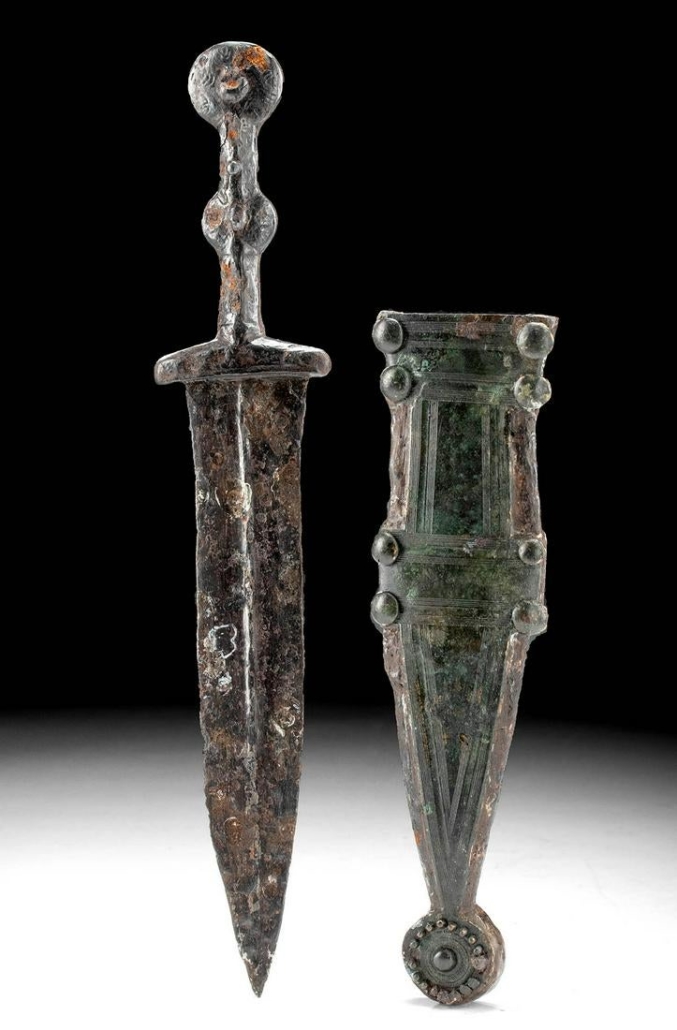
From the Roman Imperial Period, circa 1st-2nd century CE, a handsome riveted cast-steel pugio dagger offered with a $4,000-$6,000 estimate was of a type that would have served as a sidearm for Roman soldiers in close combat. Its ornately decorated bronze scabbard would have indicated the soldier’s elite status or wealth when hanging at his side. It rose to a final selling price of $13,695.
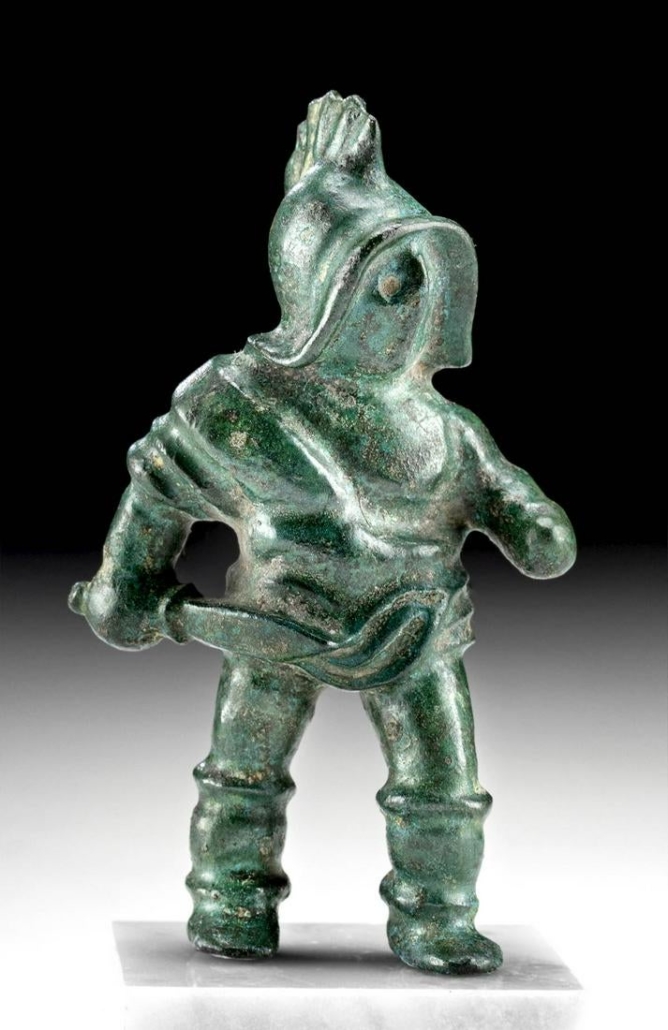
A Roman Imperial Period bronze figurine of a “murmillo” (gladiator) in full protective equipment and brandishing a typical Roman gladius, was created around the 2nd century CE. Although diminutive, the lustrously patinated 3.4-inch bronze (inclusive of custom stand) sold above estimate for $6,225. Yet another Ancient roman highlight, an iron and bronze coin die-made circa 32 BCE and inscribed for Marc Antony Denarius, changed hands for $5,291.
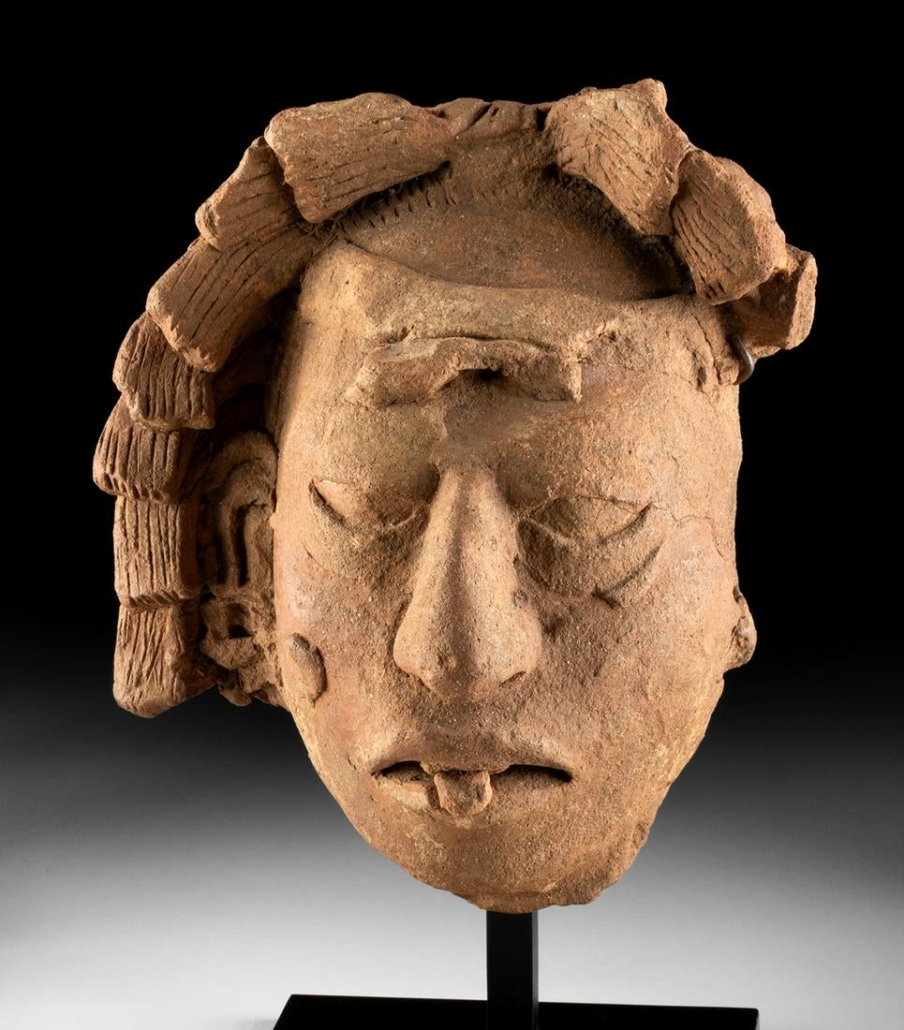
Also finishing in the upper reaches of prices realized were a circa 7th-9th century CE Maya (Mexico, Chiapas region) earthenware portrait head of an elite ancestor, previously exhibited at The Brooklyn Museum, $16,185; and a rare 19th-century Nootka (Native American, Vancouver Island, Canada) carved cedar mask embellished with abalone shells, circa 4th quarter 19th century CE. Inclusive of its custom stand, it brought $10,583.
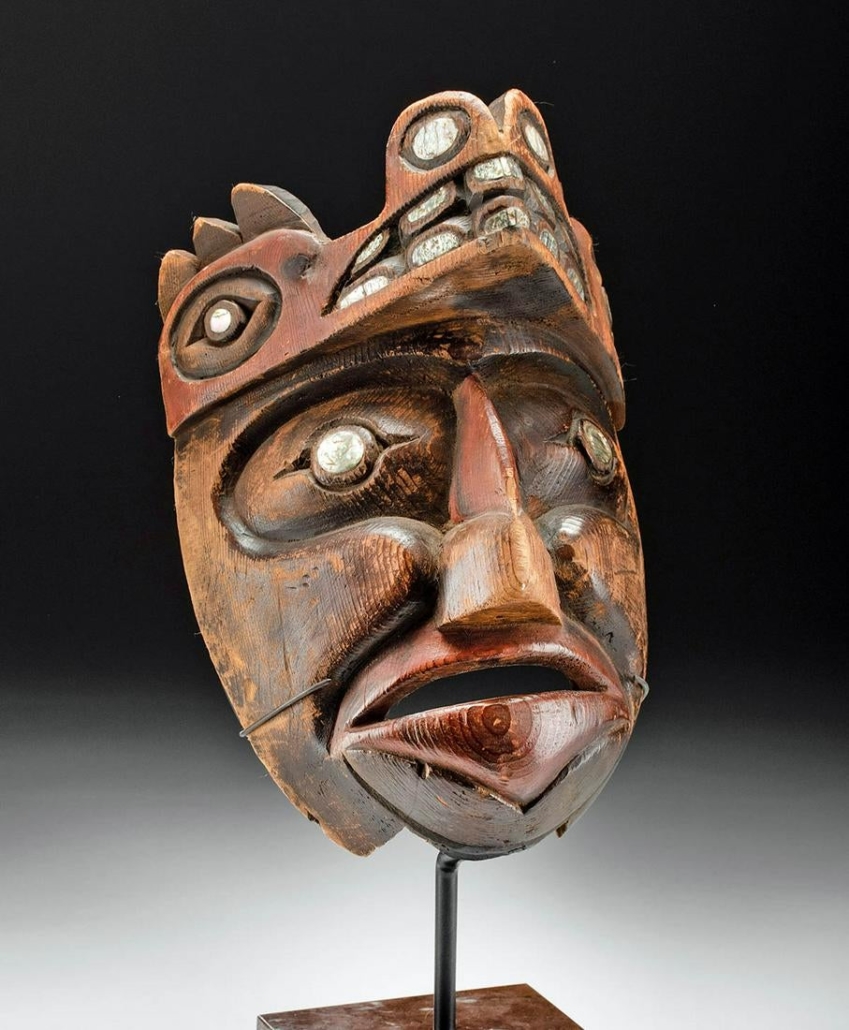
To discuss consigning antiquities, ethnographic or Asian art to a future Artemis Gallery auction, call Teresa Dodge at 720-890-7700 or email teresa@artemisgallery.com. Visit Artemis Galleries online at www.artemisgallery.com.
[av_button label=’Click to view the auction catalog complete with prices realized’ icon_select=’no’ icon=’ue800′ font=’entypo-fontello’ link=’manually,https://www.liveauctioneers.com/catalog/180232_exceptional-antiquities-asian-ethnographic/’ link_target=’_blank’ size=’small’ position=’center’ label_display=” title_attr=” color_options=” color=’theme-color’ custom_bg=’#444444′ custom_font=’#ffffff’ btn_color_bg=’theme-color’ btn_custom_bg=’#444444′ btn_color_bg_hover=’theme-color-highlight’ btn_custom_bg_hover=’#444444′ btn_color_font=’theme-color’ btn_custom_font=’#ffffff’ id=” custom_class=” av_uid=’av-5umrcxu’ admin_preview_bg=”]
View top auction results on LiveAuctioneers here: https://www.liveauctioneers.com/pages/recent-auction-sales/



